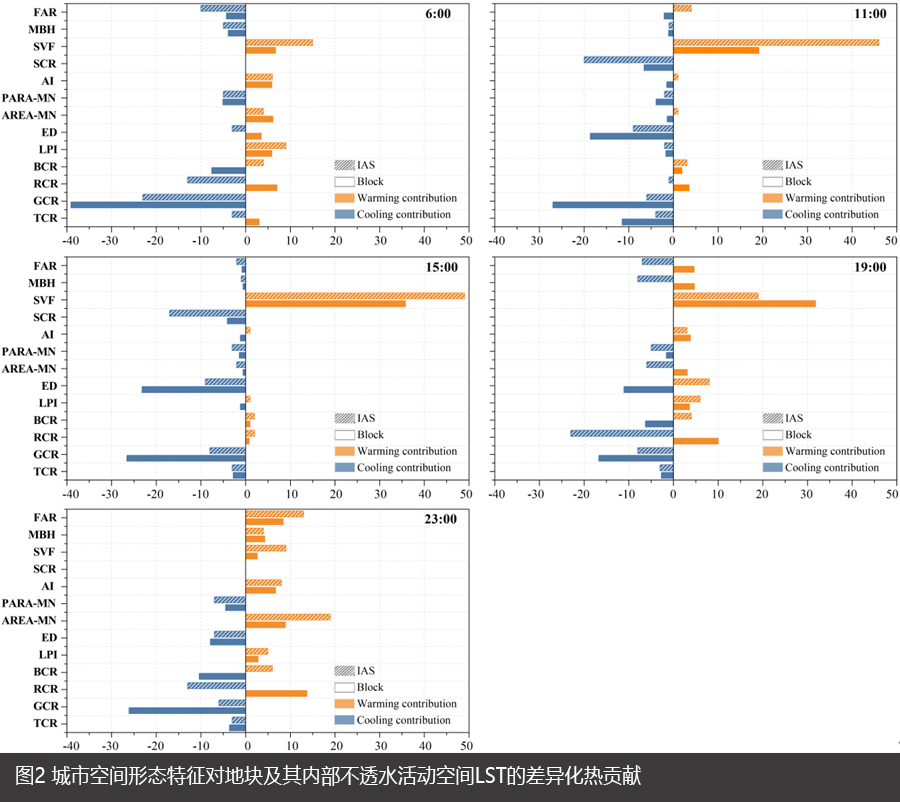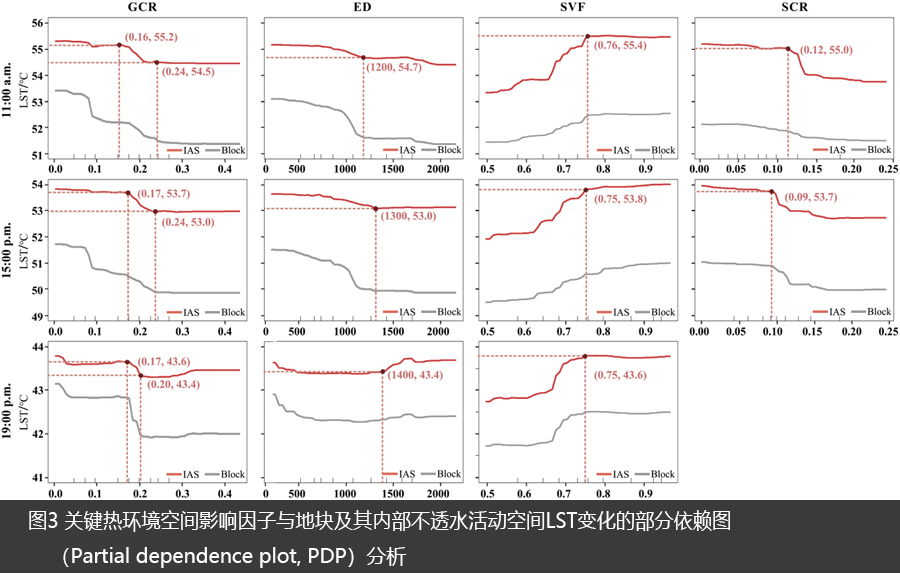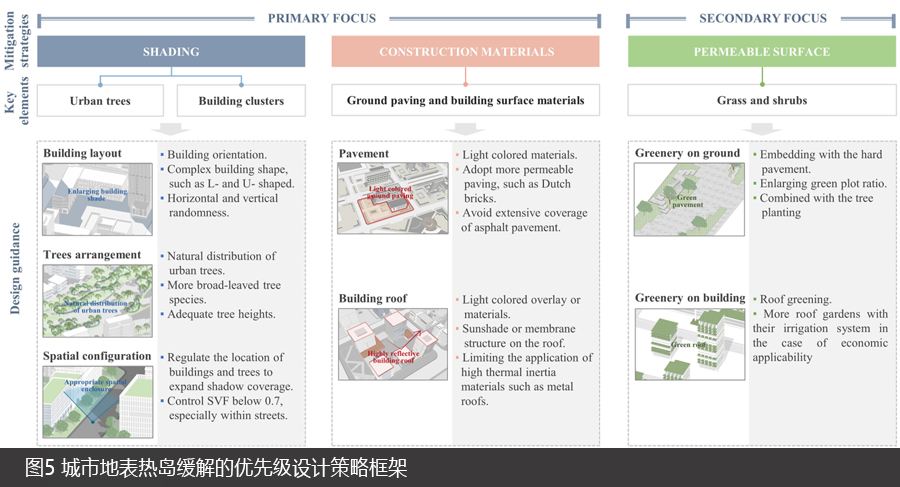近日,我校园艺林学学院风景园林系城市生态健康诊断与蓝绿空间效能优化创新团队吴昌广副教授课题组在绿色可持续发展技术领域国际权威学术期刊Sustainable Cities and Society上发表研究论文“Effectiveness of potential strategies to mitigate surface urban heat island: A comprehensive investigation using high-resolution thermal observations from an unmanned aerial vehicle”,解析了城市下垫面温度日间变化的精细化特征及环境驱动因素,为缓解城市地表热岛效应提供了新的科学依据和设计建议。
准确析取多样化城市景观元素及其空间形态特征对热环境的影响规律是明确城市降温设计策略的重要前提。然而,受到观测精度的限制,当前基于卫星反演的混合热像元难以精确捕捉异质化城市下垫面温度的时空分异,为探索城市空间特征的热效应及适应性设计带来了不确定性。利用无人机平台获取的亚米级地表温度(Land surface temperature,LST)数据及高精度三维空间信息,研究以武汉市为例在夏季日加热周期中评估城市空间形态特征、下垫面材质类型及大型蓝绿基础设施对建成环境内部热环境的综合影响,识别关键影响因子及其驱动机制,进而提炼改善城市热环境的高效设计策略。

图1 研究技术路线
在建成环境内部,基于随机森林模型的结果显示,地块尺度的LST变化主要受2D景观组分尤其是绿地覆盖率的驱动。与之相反,在精细尺度的不透水活动空间层面,3D空间构型因其遮荫调控能力而主导LST变化,并以天空开阔度(Sky view factor,SVF)为最关键的增温因子且其效率阈值约为0.7。对于城市户外降温,该结果表明综合调控城市建筑及周边绿化的空间布局以扩大遮荫比以往单一强调增加绿地覆盖或降低建筑密度更加高效。此外,虽然基于卫星观测的大量研究通过构建缓冲区分析了具有不同斑块特征的大型蓝绿空间的最大冷却距离及强度,但在高精度无人机热红外观测分析视角下,该类空间对相邻建成环境内不同下垫面材质表面温度的影响不具有显著性。最后,针对空间层面的关键城市表面降温技术,研究提供了一套具有优先序列的设计策略框架,为城市规划设计师更高效地改善户外热环境提供决策辅助和技术支持。

图2 城市空间形态特征对地块及其内部不透水活动空间LST的差异化热贡献

图3 关键热环境空间影响因子与地块及其内部不透水活动空间LST变化的部分依赖图(Partial dependence plot, PDP)分析

图4 大型蓝绿空间外部连续缓冲区的整体(a)及不同下垫面材质的平均LST变化(b)

图5 城市地表热岛缓解的优先级设计策略框架
该研究得到了国家自然科学基金(31670705)、中央高校基本科研业务费(2662022YLYJ002)、武汉市园林和林业局科技计划(WHGF2019A01,WHGF2022A04)的支持。风景园林系博士研究生李思韬为论文第一作者,吴昌广副教授为通讯作者,湖北省规划设计研究总院、湖北省空间规划研究院等单位参与了该研究。
英文摘要:Widespread utilization of satellite infrared observations has revealed potential urban morphology designs to mitigate surface urban heat island effect. However, studies towards holistic thermal effects of internal and external spatial attributes on built-up areas are limited. Moreover, the use of low-resolution thermal pixels for hybrid landscape components introduce uncertainty in deriving effective cooling strategies. Here, we obtained submeter-level land surface temperature (LST) maps and spatial datasets using an unmanned aerial vehicle and comprehensively evaluated impacts of urban characteristics on LST during a hot summer day. The results of a random forest model indicated that 2D landscape composition had the strongest thermal contribution at block scale. Conversely, at fine-scale impervious activity space, 3D spatial configuration governed daytime LST, and the identified crucial influencing metrics represented by sky view factor exhibited non-linear correlations with LST. Accordingly, shade casting was a core mechanism through which 3D elements collectively contributed to outdoor heat dissipation, more efficient than effects of surface materials and their optical properties. Furthermore, regarding uncertain exogenous thermal impact of large blue–green spaces, no significant cooling effects were detected on adjacent built-up surfaces. These findings provided prioritized insights on how to integrate diverse urban elements to effectively reduce outdoor heat stress.
原文链接:https://doi.org/10.1016/j.scs.2024.105716
作者:李思韬
审核:吴昌广






